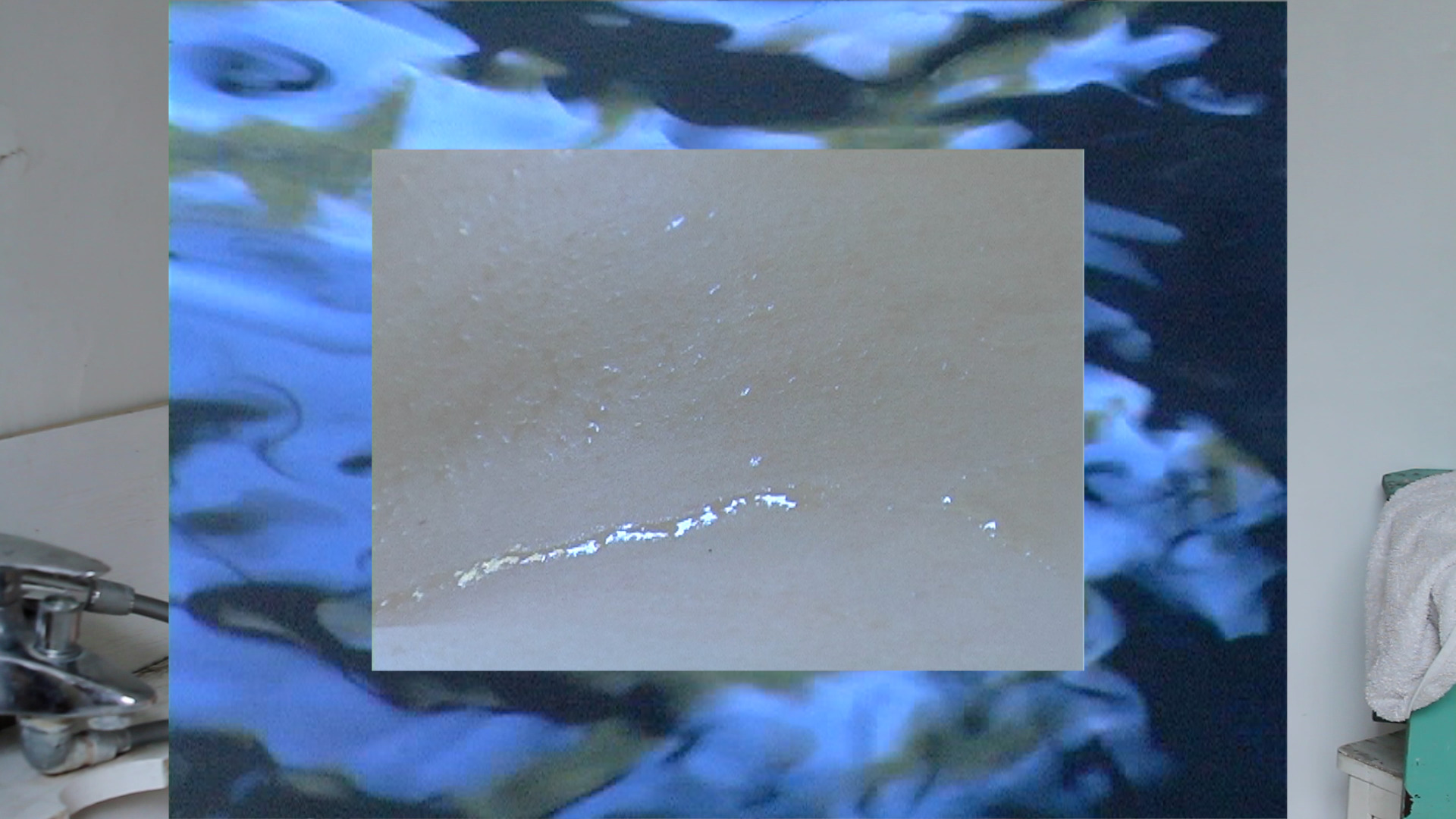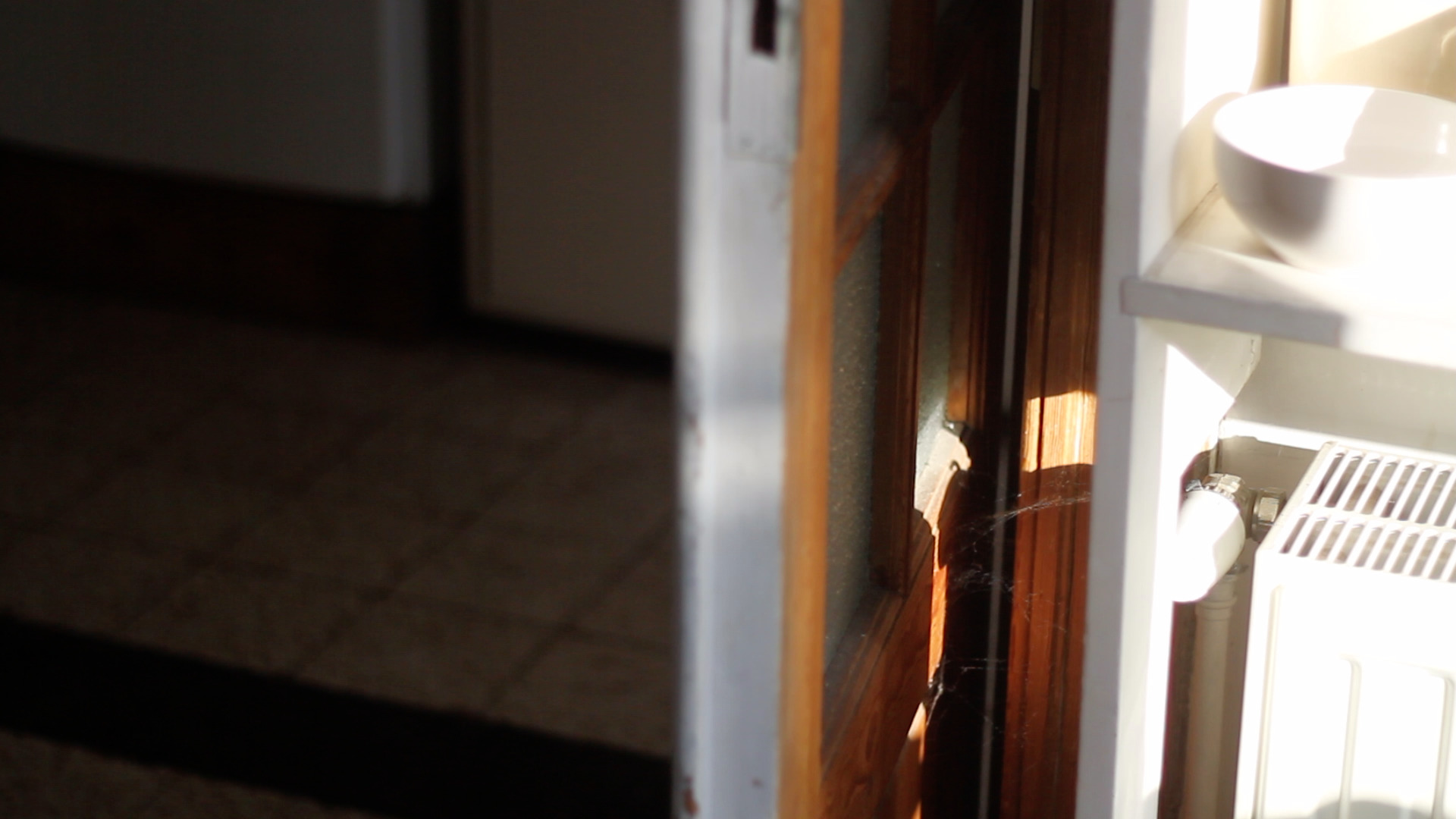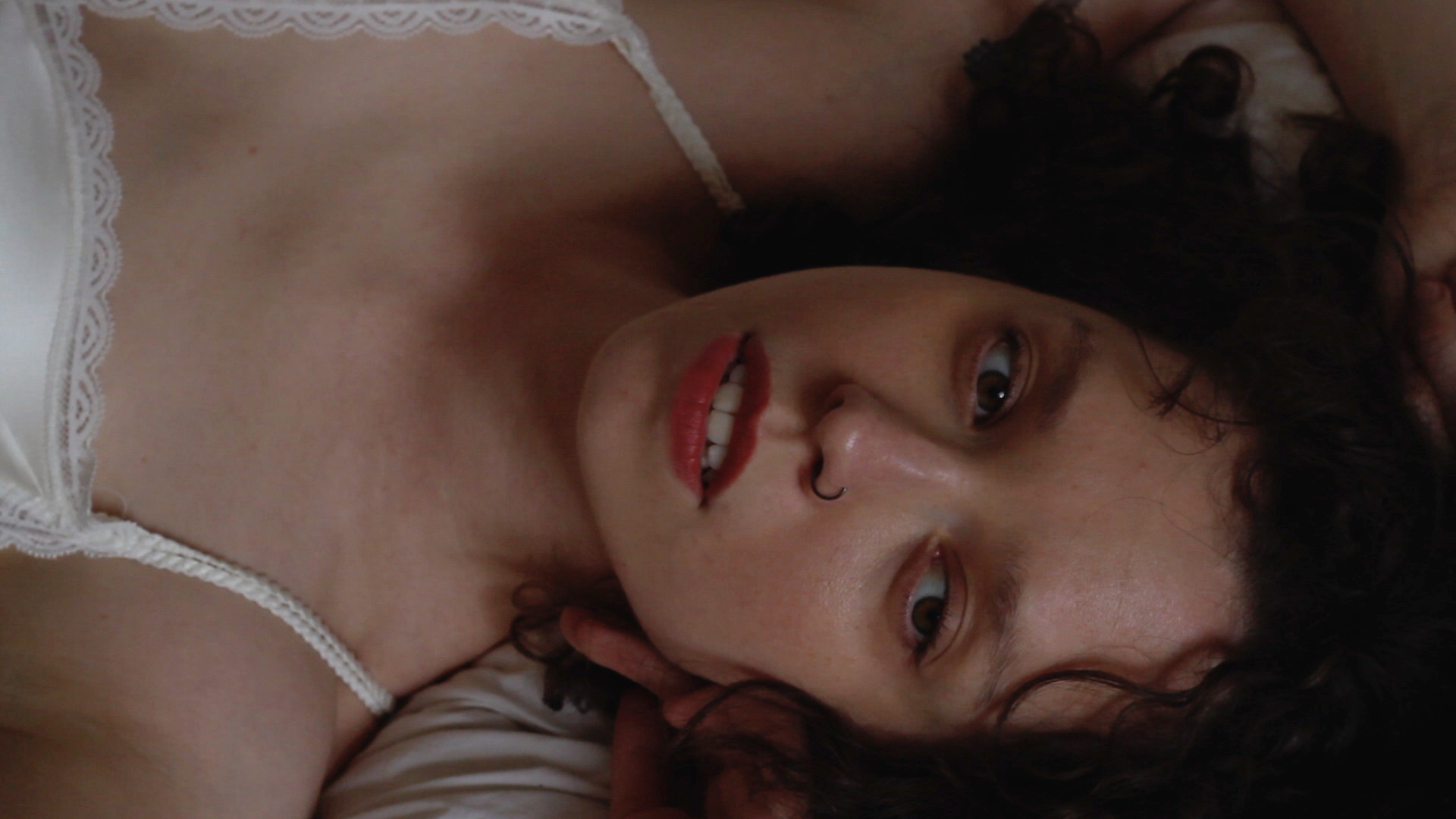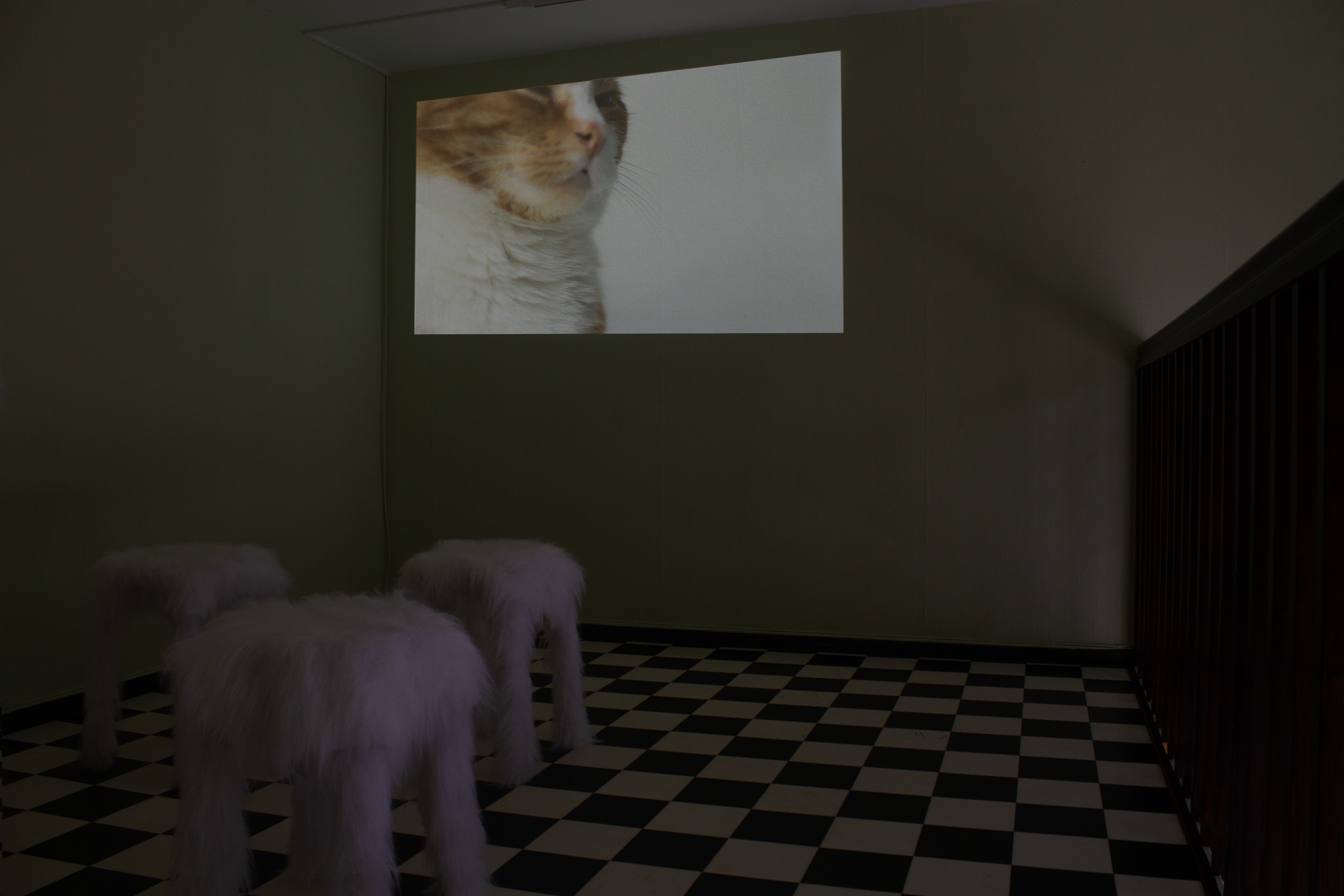Animaux De Compagnie, 2024
20:54 video projection, sound & colours
Previously shown at Omnibus Gallery (Oslo) April 2025.
![]()
The film Animaux De Compagnie (French for "pets") was made during my first year in Brussels, where I became obsessed with my current roommate, the cat Pablo. New in a foreign city without close relationships, he became my greatest listener and muse.
In a diary-like format, I began documenting our life together, which culminated in the film. No matter how much time we spent together, our relationship was confined to the domestic sphere. We lived separate lives, unknown to each other, and our interactions mostly took place on the couch or in bed where at least one of us was often asleep. This intimate yet isolated dynamic forms the foundation of the film, which is divided into five parts: kitchen, bedroom, bathroom, hallway, and living room. These spaces serve as the backdrop for scenes where I, through anti-capitalist and feminist monologues directed at the cat, explore the desire to have a witness to one's own life. I use Pablo to see myself, through my own gaze upon him.
The text in the film consists of personal experiences from my everyday life, separate from the cat. Through observations of people around me, mostly strangers, I reflect on phenomena such as screen culture, the sexualization of the female body, and ownership of one's own image. These themes are presented as observations without definitive solutions.
20:54 video projection, sound & colours
Previously shown at Omnibus Gallery (Oslo) April 2025.

The film Animaux De Compagnie (French for "pets") was made during my first year in Brussels, where I became obsessed with my current roommate, the cat Pablo. New in a foreign city without close relationships, he became my greatest listener and muse.
In a diary-like format, I began documenting our life together, which culminated in the film. No matter how much time we spent together, our relationship was confined to the domestic sphere. We lived separate lives, unknown to each other, and our interactions mostly took place on the couch or in bed where at least one of us was often asleep. This intimate yet isolated dynamic forms the foundation of the film, which is divided into five parts: kitchen, bedroom, bathroom, hallway, and living room. These spaces serve as the backdrop for scenes where I, through anti-capitalist and feminist monologues directed at the cat, explore the desire to have a witness to one's own life. I use Pablo to see myself, through my own gaze upon him.
The text in the film consists of personal experiences from my everyday life, separate from the cat. Through observations of people around me, mostly strangers, I reflect on phenomena such as screen culture, the sexualization of the female body, and ownership of one's own image. These themes are presented as observations without definitive solutions.






 Exhibition view at Omnibus Gallery (Oslo)
Exhibition view at Omnibus Gallery (Oslo)Documentation by the artist